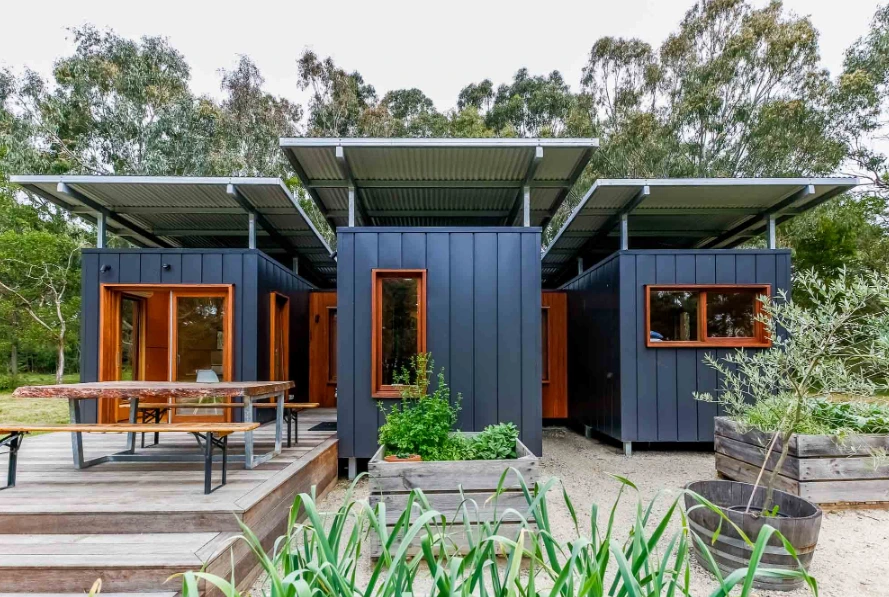Tiny homes represent an incredibly enticing option for families seeking to downsize. Praised for their ability to substantially reduce carbon footprints, decrease utility bills, and cultivate an organized living environment, these compact dwellings boast numerous advantages.”two houses connected by breezeway“However, their main obstacle lies in their limited space, which may feel confining for larger families. Nevertheless, tiny homes are both cost-effective and customizable. To address the challenge of space constraints, multiple tiny homes can be interconnected, effectively doubling the available area and creating separate zones for relaxation. This arrangement is particularly beneficial for hosting guests, accommodating extended family, or providing space for grandparents, with additional units either complementing the main house or exhibiting unique styles. Various expansion options are on the table, ranging from sunrooms to connecting walkways.
Exploring Connected Tiny Houses
Connected tiny houses are compact residences enriched with smart home technologies that enhance functionality and efficiency. These technologies encompass automated lighting, climate control, security systems, and energy management solutions. The seamless integration of these systems empowers residents to remotely control various aspects of their home via smartphones or other devices, rendering tiny house living not only practical but also highly convenient.
Key Features of Connected Tiny Houses
- Smart Thermostats: Devices like the Nest or Ecobee adapt to your schedule and regulate the temperature to ensure comfort while conserving energy.
- Automated Lighting: Systems such as Philips Hue or LIFX enable remote control of lights, scheduling settings, and adjustment of brightness and color.
- Voice Assistants: Tools like Amazon Alexa, Google Assistant, or Apple HomeKit facilitate the management of smart devices, playing music, and controlling the home through voice commands.
- Security Systems: Smart locks, cameras, and doorbells (e.g., Ring or August) offer the capability to monitor and secure the home from anywhere.
- Energy Management Systems: These systems monitor energy usage, assist in reducing utility bills, and propose strategies for enhancing energy efficiency.
- Space-Saving Furniture: Automated and versatile furniture, such as beds that fold into walls or multifunctional kitchen appliances, optimize the utilization of available space.
Benefits of Connected Tiny Houses
- Energy Efficiency: Smart systems streamline energy consumption, resulting in reduced utility bills and diminished environmental impact. Additionally, the inclusion of solar panels and energy-efficient appliances further bolsters sustainability.
- Cost Savings: Despite the initial investment required for smart technology, long-term savings are realized through reduced energy consumption, maintenance costs, and utilities. Furthermore, the smaller size of these homes translates to lower building and upkeep expenses.
- Convenience and Comfort: Remote management of home systems offers substantial convenience. Smart technology automates daily tasks, simplifying life and enhancing comfort.
- Enhanced Security: Real-time surveillance and control of security systems provide peace of mind, whether residents are at home or away.
- Space Optimization: Smart technology and adaptable furniture ensure that every inch of the tiny house is utilized effectively, creating a comfortable living space.
Conclusion
Connected tiny houses are transforming the concept of living spaces. By merging the minimalist principles of tiny homes with the advantages of smart technology, they offer a unique and captivating option for contemporary living. Whether one seeks a primary residence, a vacation home, or an off-grid retreat, connected tiny houses offer a glimpse into the future of comfortable, sustainable, and efficient living.

